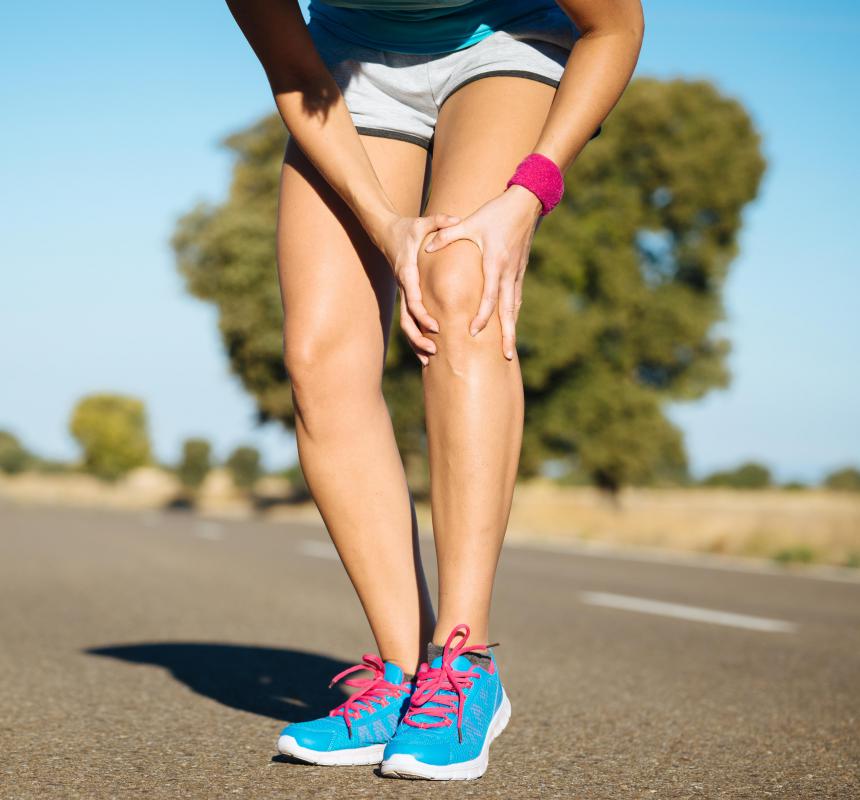At WiseGEEK, we're committed to delivering accurate, trustworthy information. Our expert-authored content is rigorously fact-checked and sourced from credible authorities. Discover how we uphold the highest standards in providing you with reliable knowledge.
What are the Causes of a Dislocated Patella?
A dislocated patella is when the kneecap either partially or fully pops out of its groove. Some of the most frequent causes of a dislocated patella include a shallow patella groove, a high riding kneecap, sudden movement, and loose ligaments. A dislocated patella can also be the result of a direct blow to the kneecap such as during sporting activity or a heavy fall.
There are a number of potential causes of a dislocated patella. In a normal knee, the patella, or kneecap, fits into a V shaped groove and glides smoothly. If there is an abnormality in this groove, or a problem with the ligaments that hold the knee in place, a dislocation is much more likely. There is some evidence to suggest that a person can be genetically disposed to suffering from a dislocated patella if his or her parents have a similar condition.

When the knee is straightened or bent, the kneecap fits into the patella groove. A potential cause of a knee disorder is if this groove is too shallow or uneven. In certain situations this might allow the patella to slide sideways and become dislocated. If a person suffers from a high riding patella, also known as patella alta, this can also pull the patella out of its groove.

During athletic activity, a dislocated patella can occur if the athlete changes direction sharply. If the foot is placed firmly on the floor — especially if the athlete is wearing studded footwear — and a large turning force is applied through the joint, there is a risk of dislocation. This kind of movement can also damage the meniscus and other parts of the knee. Although sudden movement is the cause of the dislocation, the knee is usually predisposed to this sort of injury. If, for example, the athlete has loosened ligaments, he or she is more likely to suffer a dislocated patella.

In some cases, a dislocated patella is the result of an impact injury. This can occur during athletic activity, where an athlete receives a strong blow to the kneecap which can force it out of the groove. It can also be the result of a heavy fall onto the knee. A dislocation caused by a direct impact typically results in more damage because a large force is required. The ligaments which hold the patella in place are likely to be injured during a direct impact.
AS FEATURED ON:
AS FEATURED ON:














Discuss this Article
Post your comments